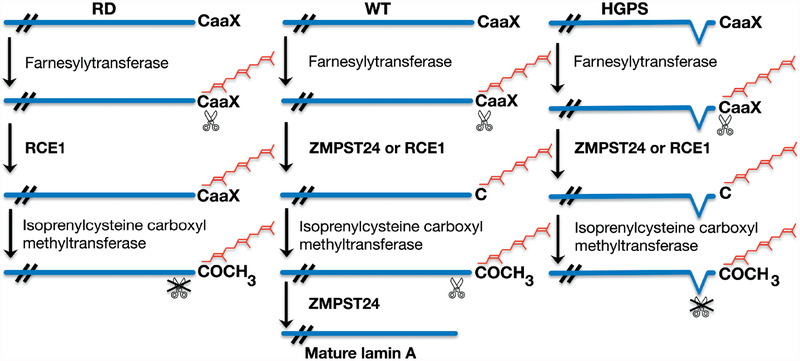Figure 3.
Processing of prelamin A in wild-type (WT) cells occurs in a series of sequential enzymatic reactions that lead to farnesylation, endoproteolytic cleavage of–aaX, carboxymethylation and a second endoproteolytic cleavage catalysed by ZMSTE24. In restrictive dermopathy (RD), there is no ZMPSTE24 activity, which results in accumulation of farnesylated, carboxymethylated prelamin A. In Hutchinson–Gilford progeria syndrome (HGPS), the second site for cleavage catalysed by ZMPSTE24 is deleted, which leads to accumulation of progerin, a truncated variant of farnesylated, carboxymethylated prelamin A. Reproduced with permission from: Worman HJ, Östlund C, Wang Y. Diseases of the nuclear envelope. Cold Spring Harb Perspect Biol 2010; 2: a000760 [66].

